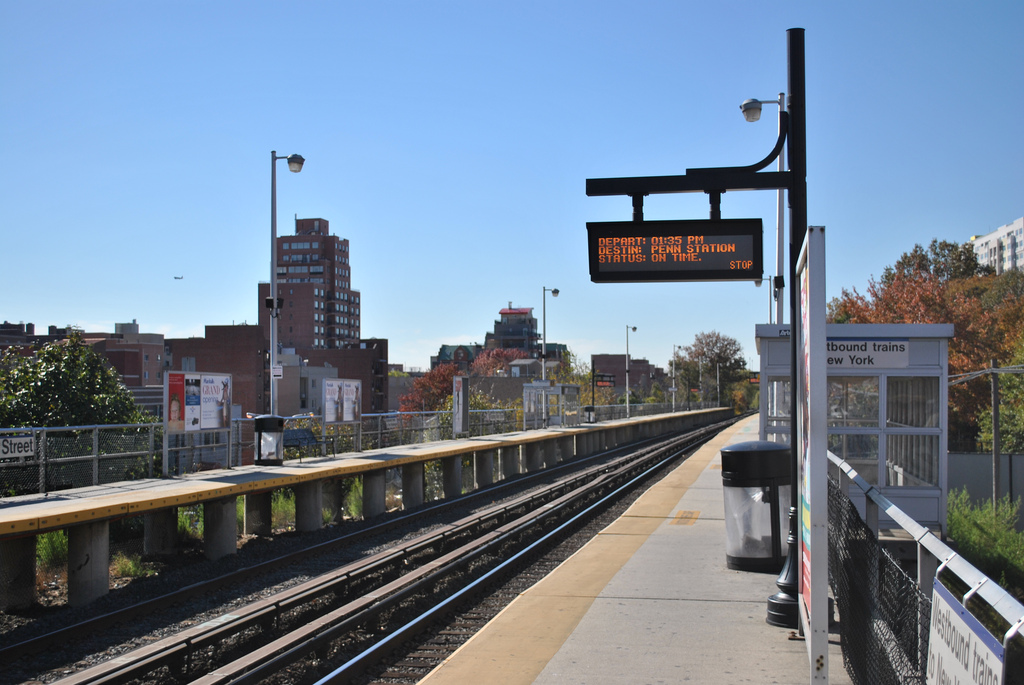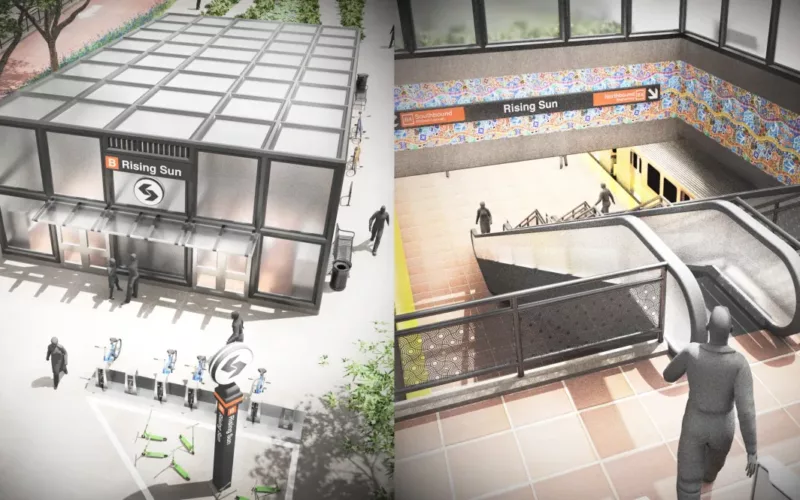

Trains are a rare sight at LIRR stations like Flushing Main Street; could East Side Access change that?
NYC Comptroller Scott Stringer recently made a splash with a proposal to level commuter rail fares within New York City to the cost of subway and bus rides. The MTA countered that Stringer’s analysis showing that rush hour commuter trains have room for more people is wrong, stating Metro-North and Long Island Railroad (LIRR) simply cannot bear an influx of bus and subway riders. There is likely some middle ground in that argument. But what’s not debatable is that a major capacity increase for New York’s commuter rail system is on the horizon, in the form of the LIRR’s pending connection to Grand Central Terminal. NYC leaders seeking more for the city from the railroad system should wage a fight over how that capacity will be allocated before it’s too late.
A pragmatic way forward on the immediate debate over capacity would be an honest MTA evaluation of commuter rail ridership and crowding, and of the impact of the MTA’s Atlantic Ticket pricing pilot, with an eye to expanding the pilot’s reach (your editor recently rode a half-empty 8pm Metro-North train from Woodlawn to Grand Central). Atlantic Ticket has reduced LIRR fares on travel between seven stations in Queens (Hollis, Jamaica, Laurelton, Locust Manor, Queens Village and Rosedale) and two in Brooklyn (East New York and Atlantic Terminal). Otherwise, commuter rail fares within NYC can run as high as four times the $2.75 subway/bus base fare. The reduced fare for travel between the stations, or directly to Atlantic, is $5, down from the normal peak price of $10.25. The duration of the Atlantic ticket pilot is still uncertain.
Long Island Railroad’s connection to Grand Central — the wildly over-budget and much delayed “East Side Access” project — will not mark a move to the through-running regional rail that many recommendations have called for and that many cities around the world enjoy. But it will mark the biggest change in NY’s commuter rail network in decades, and its potentials should be closely examined.
Several aging planning documents make broad statements about the capacity expansion East Side Access will bring, with most claiming that it and associated LIRR improvements will increase train service by about 45% and serve about 162,000 customers per day. Numbers from the MTA estimated that the project would divert about 62,000 riders from other stations into Grand Central during AM peak periods. There is no published East Side Access service plan.
The additional service could focus on the NYC stations where train schedules stink, but it won’t happen without sustained attention by NYC leadership.
For example, at Queens stations like Locust Manor and Laurelton, riders can wait anywhere from 10 to 35 minutes, while at stations along the Port Washington Branch like Flushing and Murray Hill, wait times can jump to about 42 minutes. Off peak wait times are frequently over an hour. Some stations, like Hunterspoint, have virtually no off-peak service at all.
It’s also worth asking whether the region needs more peak service to places like Ronkonkoma and Babylon. NYC’s population growth since 2010 has been 4.4%, with economic growth focused in Brooklyn, Queens and the Bronx. Long Island’s population has been nearly flat, though Long Island job growth has outpaced other metro suburbs.
East Side Access has been maligned as an excess of powerful Long Island political leaders – actors now long gone from the scene. But the project is coming, and New York City should set forth an agenda for how it will be used.
 On the Brink: Will WMATA’s Progress Be Erased by 2024?
On the Brink: Will WMATA’s Progress Be Erased by 2024?
The experience of being a WMATA rider has substantially improved over the last 18 months, thanks to changes the agency has made like adding off-peak service and simplifying fares. Things are about to get even better with the launch of all-door boarding later this fall, overnight bus service on some lines starting in December, and an ambitious plan to redesign the Metrobus network. But all of this could go away by July 1, 2024.
Read More To Achieve Justice and Climate Outcomes, Fund These Transit Capital Projects
To Achieve Justice and Climate Outcomes, Fund These Transit Capital Projects
Transit advocates, organizers, and riders are calling on local and state agencies along with the USDOT to advance projects designed to improve the mobility of Black and Brown individuals at a time when there is unprecedented funding and an equitable framework to transform transportation infrastructure, support the climate, and right historic injustices.
Read More